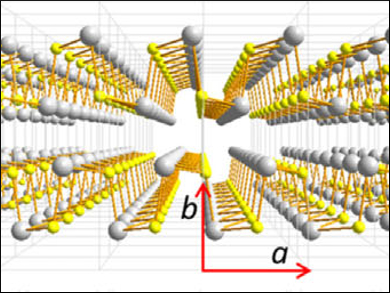Tin sulfide (SnS) is an earth-abundant, environmentally friendly semiconductor material with a bandgap of about 2 eV, which has potential in applications such as photovoltaics and photocatalysis. The two-dimensional nature of the SnS structure is analogous to that of black phosphorus and may provide a chance to fabricate films with a high surface area. However, these advantageous characteristics of SnS have not been widely explored due to the challenges associated with its synthesis, such as the control of phase purity and thickness.
Yu Kwon Kim, Ajou University, Suwon, Republic of Korea, Joondong Kim, Incheon National University, Republic of Korea, and colleagues have studied a SnS film grown on a transparent conducting oxide (TCO) and explored its role in photocatalytic H2 production. The team successfully grew high-quality, thickness-controlled nanodisk-shaped SnS films by an in-situ structural transition of sputter-deposited SnS2 films and characterized their physical properties.
The researchers then studied the photocatalytic water splitting performance of the SnS films and found that the films show a fairly good quantum efficiency for H2 evolution. Due to the favorable band alignment as well as the good photoresponse of the film, good photoelectrocatalytic hydrogen production in the order of 100 μmol h–1 cm–2 was observed.
- Facile Formation of Nanodisk-Shaped Orthorhombic SnS Layers from SnS2 Particles for Photoelectrocatalytic Hydrogen Production,
Malkeshkumar Patel, Xiaomei Yu, Yu Kwon Kim, Joondong Kim,
ChemNanoMat 2017.
DOI: 10.1002/cnma.201700118

